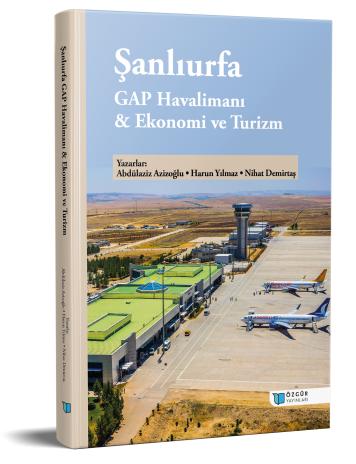
ŞANLIURFA GAP Havalimanı & Ekonomi ve Turizm
İndir
Özet
Roma İmparatorluğu tarihteki gücünü yollar inşa ederek ulaşım ağı sayesinde korumuştur. “Bütün yollar Roma’ya çıkar” sözü bunun kanıtını oluşturur. Her ne kadar buradaki Roma sözünden İtalya’daki Roma anlaşılsa da esasen söz Doğu Roma’nın başkenti olan İstanbul (Konstantinopolis) için söylenmiştir. Burada vurgulanmak istenen ulaşım ağı ve yolların ülkelerin, şehirlerinin kaderini belirlemedi rolüdür. Bu kitapta da GAP Havalimanı özelinde ulaşımın Şanlıurfa’nın ekonomik, sosyokültürel ve çevresel yapısını nasıl etkilediği ortaya konmuştur. Şanlıurfa, tarih sahnesinde var olan en eski uygarlıklara ev sahipliği yapmış kadim bir şehirdir. Tarihin “sıfır” noktası olarak kabul edilen Göbeklitepe ve Karahantepe’deki bunun en açık örneğini oluşturmaktadır. Kitap Şanlıurfa’ya ait tarihi, kültürel ve turistik çekicilikleri ekonomik, sosyo-kültürel ve çevresel bakış açısıyla bütüncül bir şekilde ortaya koymaktadır. Bu bağlamda Şanlıurfa’nın sahip olduğu sivil mimari eserleri (geleneksel Urfa evleri, Harran Kümbet Evleri, sokaklar, kabaltılar); anıtsal yapılar (camiler, han, manastır ve kilise, müze, türbe, medrese, çeşme, hamam, şehir sur ve kale yapısı, tarihi evler, meydanlar, mağaralar ve ticari yaşamın hüküm sürdüğü çarşılar); geleneksel el sanatları (cülhacılık, keçecilik, bakırcılık); tarihi öneme sahip alanlar (Göbeklitepe, Karahantepe, Haleplibahçe); el sanatlarına dair (bakırcılık, kürk, deri ceket yapımı); kültürel yaşam biçimi ve eğlenceler (geleneksel sıra geceleri, halkoyunu, atçılık, kuşçuluk); yeme – içme kültürüne (isot, biber reçeli, Urfa Fıstığı, mırra, Urfa Peyniri, Urfa Sade Yağı) ait geleneksel üretim ve turistik çekicilikler incelenmiştir. Ulaşım ve turistik tüketim arasında rol oynayan karar vericiler, tedarikçiler ve hizmet sektörüne ait aktörlerle yapılan anket ve mülakatlarla şehrin ulaşım ve gelişme arasındaki ilişkisi ele alınmıştır. Şanlıurfa’ya ait turistik ulaşımın büyük ölçüde GAP Havalimanı ile sağlandığı görüşmüştür. Şehre ulaşan yerli ve yapancı ziyaretçilerin şehrin ekonomik, sosyokültürel ve çevresel yapısını ne şekilde etkilediği incelenerek izlenmesi gereken yol haritası ortaya konmuştur. Bu bağlamda yerel yöneticiler, Kültür ve Turizm Müdürlüğü, akademisyen, konaklama işletmesi, seyahat acentesi, sivil toplum kuruluşları (gastronomi merkezi, Turizm Geliştirme, GAP Havalimanı temsilcileri) ve yerel halkla görüşmeler sağlanarak değerlendirme yapılmıştır. Sonuçta bir ulaşımın bir şehri ne şekilde etkilediği ve kaderini ne şekilde değiştirebileceği ortaya çıkmıştır.

